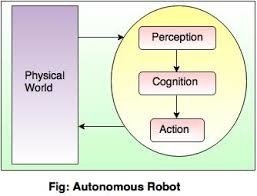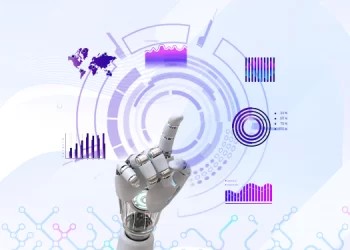The traditional components of AI – perception, decision-making/cognition and action map up quite precisely with the business problems the Oil & Gas sector deals with- collect and process lots of data (perception); where to drill? (decision-making); and how to drill and process most efficiently (action). This is my take as an outsider looking in.
A few years ago I moved from Upstate New York to Texas. In a lighter vein that can be described as a move from “no fracking please, we’re New York” to “Drill, baby, Drill”. Time magazine described it well in a recent issue: How an Oil Boom in West Texas Is Reshaping the World . Oil and Gas exports are playing a key role in a resurgent US economy.
Living in Fort Worth, TX and knowing my interest in emerging and disruptive technologies I am often asked by fellow IT professionals whom I meet at various events – what are my views on the role of Artificial Intelligence (AI) in the Oil and Gas sector? Well, I cannot claim great expertise of the sector (i.e. if I totally discount time hanging out with Schlumberger guys as a fellow expatriate in Vietnam in the early/mid 90s).
Let’s start with the traditional components of AI –
 – perception,
– perception,
– cognition/decision making (very critical, machine learning can be used to make decisions much more effectively)
– action
and see how that can play in the various segments of the Oil and Gas industry:
- Upstream or E&P (Exploration) and Production sector. This includes companies/technologies that extract crude oil or natural gas.
Role of AI:
- You can reduce Onsite operating costs with sensors and the Internet of Things (IoT) powered by Artificial Intelligence to manage data collection and system control in real time
- Eliminate costly risks in drilling by identifying best sites.
- Well reservoir facility management
- Midstream: processes, stores, and transports crude oil, natural gas, and liquefied natural gas
Role of AI:
- Real-time intelligent system with forecasting as well as optimization capabilities for better decisions and operating performance.
- Oil and gas well surveying and inspections
- Downstream: includes oil refineries, petrochemical plants, petroleum product distributors, and natural gas distribution companies.
Role of AI:
- data model as well as predictive algorithms to develop software-based insights and solutions for the end-to-end management of water and other consumables.
- streamline their refinery as well as petroleum delivery operations to accelerate revenue growth
There are certain aspects where AI has a role to play across the entire value chain:
- AI can help oil and gas companies’ lower costs and make more accurate decisions.
- Planning and forecasting
- Predictive maintenance
Like any other sector, there will be a wrong way and a right way to go about doing this
The Wrong Way
- We’ve got massive amounts of data. There must be some value in it. Let’s use AI to figure it out.
- Can a computer replace the brains of all my employees and do more efficiently what they do?
- Can I get some AI “Magic Dust”, sprinkle it on my organization and make it smart?
The Right Way
Let’s play it through with a representative use case :
- Work with a problem (g. “As wells become more complex, logging and LWD (Logging while Drilling) measurements become more challenging to obtain”)
- Write the solution you’d like to have. (possibly a capability to provide reservoir properties without running expensive logging tools).
- then work backwards and identify what kind of automation might support this goal (AI driven predictive model?)
- break the problem down into the traditional components of AI—
- perception (use gamma ray logs and drilling dynamics data (ROP, weight on bit, torque, etc.) for many domestic and international basins.)
- decision-making (ascertain predictive accuracy and repeatability of the AI-driven logs vs. actual logging with associated tools costs using static and adaptive models)
- action (provide the operator with critical formation data for these horizontal wells that would have been cost-prohibitive had the well been logged using conventional methods.)
- map those onto several parts of the business problem
- validate AI models constructed for various formations perform within the expected parameters vis-à-vis blind tests;
- quantify savings delivered to the operator on data acquisitions costs;
- Ensure AI-based logging data were delivered to the operator on a daily basis to assist with geosteering, drilling and completion decisions while drilling operations were ongoing
- then work back to know whether there is the data you need, and how you collect it (a framework for planning a data acquisition program using conventional logging tools.).
In conclusion, I think there is tremendous opportunity for leveraging the entire continuum – AI, Machine Learning, Deep Learning and Data Science in the Oil and Gas sector to drive efficiencies even as we remain mindful of the following caveat:
AI is about using math to create machines make better decisions. At the moment it has no single thing to do with simulating human intelligence. Once you learn that, it kind of gives you permission to think about how a collection of data tools— like deep learning, auto machine learning and natural language translation—how you can put them into situations where you can solve problems. Insetad of saying “Would not it be good if the computer replaced the brains of my employees so that they could automatically run my company?”
~Andrew Moore, Google Cloud AI

Deepak Seth
Deepak Seth is Principal Director, Technology Consulting at Accenture. He provides Innovation and Thought Leadership as part of Accenture's CIO Advisory practice for clients in the Resources sector (Oil and Gas, Chemicals, Utilities, Minerals and Mining etc.). Prior to this Deepak has handled diverse and progressively increasing responsibilities at Xerox's IT organization. His last role was as Technology Strategy and Business Transformation leader for Solution Delivery and Acceleration. Deepak is a passionate advocate for innovation and adoption of Cloud solutions, AI/ML, API Microservices, predictive analytics, collaboration tools, blockchain, and other nascent/disruptive technologies into the enterprise to develop new opportunities and applications. Prior to Xerox, he has led several global initiatives for leading Corporations (including Bausch+Lomb, BlueCross BlueShield, Glaxo etc.). He has extensive experience in sales, finance and information technology in Asia, Africa and the Americas.








